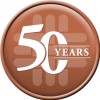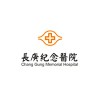
Multiple Burrhole Therapy With Erythropoietin for Unstable Moyamoya
Ischemic AttackIschemic Stroke3 moreIn this study, the investigators aim to evaluate the indirect revascularization outcomes of a new combination therapy of multiple burrhole procedure with promotion of arteriogenesis by intravenous (IV) erythropoietin (EPO) pretreatment on Moyamoya patients with acute neurological presentation, and outline the clinical and vascular factors associated with revascularization through the burrholes.

Single Bolus Recombinant Nonimmunogenic Staphylokinase (Fortelyzin) and Bolus Infusion Alteplase...
Ischemic StrokeThe aim of the study is to determine if single-bolus recombinant nonimmunogenic staphylokinase is effective and save thrombolytic agent in patients with ischemic stroke in comparison to alteplase.

SEdation Versus General Anesthesia for Endovascular Therapy in Acute Ischemic Stroke
StrokeObjectives: This study aims to estimate overall treatment benefit (improvement in disability) among acute ischemic stroke patients that are randomized to General Anesthesia (GA) compared with Sedation (CS) during endovascular therapy. Assess safety (as measured by incidence of symptomatic intracranial hemorrhage); rates of Endovascular therapy (EVT) procedural complications, reperfusion; and quality of life. Hypothesis: GA during EVT for acute ischemic stroke improves functional outcomes at 90 days compared to sedation.

Stepper Aerobic Training on Fitness, Disability, Inflammation and Thrombosis in Stroke Patients...
Ischemic StrokeStroke rehabilitation of hemiplegics primarily lies in motor control and training of activities of daily life. Whole body aerobics is much less emphasized. Nonetheless, cardiopulmonary fitness of even ambulatory hemiparetics is only half compared with healthy people, which is prone to deconditioning. The present study aims to understand the efficacy of aerobic training in addition to the usual neuro-rehabilitation, including aerobic fitness, daily activities dependency, anti-inflammation and anti-thrombosis. This is a prospective and randomized design. The subjects will be recruited from the hospitalized patients in the rehabilitation ward of Chang Gung Memorial Hospital at Linkuo. 120 hemiplegic patients due to stroke will be enrolled and randomized into two groups: combined training (CT) and usual rehabilitation. Participants in CT will receive aerobics at moderate intensity in addition to the usual rehabilitation. The program has 35 minutes/session, 5 sessions/week and 4-5 weeks in total. A constant-power semi-recumbent stepper will be employed as the training modality. It uses bilateral reciprocal movement of the arm coupled with the opposite leg, which allows for a push and pull motion. Additional 20 healthy participants will also be recruited as the healthy control. Assessment before and after training includes: (I) graded cardiopulmonary exercise test using constant-load stepper. (II) Functional Independence Measure. (III) coagulation system assessment, using Thrombin generation assay and Ceveron alpha (Technoclone GmbH, Vienna, Austria) : Von Willebrand factor, tissue plasminogen activator, plasminogen activator inhibitor-1, D-dimer, factor VIII, etc. [the 1st year]; (IV) monocyte-platelet aggregation and its subtypes, using flow cytometry [the 2nd year]. ( V) systemic inflammation, platelet activation and prognostic biomarker:C-reactive protein, soluble P-selectin, asymmetric dimethylarginine, Lipoprotein-Associated Phospholipase A2, etc [the 3rd year]. Statistical analysis will use ANOVA with post-hoc, two-way repeated measure ANOVA, etc. The investigation will start after approval and end in 2019, July. We hope this investigation will establish a more comprehensive rehabilitation program for clinical application.

Lifestyle Counselling as Secondary Prevention in Patients With Minor Stroke and Transient Ischemic...
StrokeIschemic2 moreInterventions to improve health behaviour in patients with resent acute stroke are not well established. This study will evaluate the feasibility and effect of an early initiated counselling intervention targeting smoking, physical activity, and adherence to preventive medication, with regular follow-up sessions, in patients with acute minor stroke or transient ischemic attack who are discharged home.

Argatroban Plus R-tPA for Acute Ischemic Stroke
StrokeAcute ischemic stroke (AIS) is the most common type of stroke, which has high rate of morbidity, mortality and disability. A large number of studies have confirmed that the thrombolytic therapy can effectively open blood vessels and improve the functional prognosis of acute ischemic stroke. Therefore, all guidelines recommend intravenous thrombolysis as the first treatment of ischemic stroke patients within 4.5 hours of onset. However, about 1/3 patients receiving thrombolysis will have good prognosis, while a large number of patients will still be disabled and even dead. How to improve the neurological prognosis of thrombolytic patients has been a hot topic in the world. Recent studies have found that the combined application of argatroban and rt-PA in the treatment of AIS might improve the clinical prognosis and not significantly increase bleeding. Some studies have reported that the combined application of argatroban and rt-PA could improve the blood vessel opening rate, and prevent re-occlusion after opening. Based on the discussion, the present study is designed to explore the efficacy and safety of argatroban plus rt-PA in the treatment of AIS.

Neurodevelopmental Therapy-Bobath Approach in The Early Term of Stroke; Safe and Effective
StrokeAcute1 moreEarly term rehabilitation initiated after stroke should be based on motor learning principles and neural plasticity. To achieve motor learning and neural plasticity, exercises consisting of intense and repetitive training should be given according to the patients' functional level. The neurodevelopmental treatment-Bobath (NDT_B) approach is based on motor learning principles. In literature, studies that show the early term effects of NDT-B on functional recovery are inadequate. The aim of this study was to investigate the effects NDT-B applied in the early term of stroke, on postural control, functional movement, balance and activities of daily living.

The Influence of Mandibular Advancement Device Treating OSAHS on Primary Prevention of Ischemic...
Sleep Apnea SyndromesAtherosclerosis1 moreThe purpose of this study is to detect the differences of carotid atherosclerosis severity between patients with or without OSAHS(Obstructive Sleep Apnea and Hypopnea Syndrome) in a cross-sectional study in a large sample. Then a longitudinal control study is conducted to observe the progress of the carotid atherosclerosis by vascular ultrasonography and the occurrence of cerebrovascular events after the intervention of the oral appliance for treating OSAHS,and finally explore the feasibility of using oral appliance to treat OSAHS in primary prevention of ischemic stroke.

Stent Retriever for Thrombectomy Revascularisation of Large Vessel Occlusions in Acute Ischemic...
Acute Ischemic StrokeThe study is a randomized, prospective, parallel-group, multicenter, open-label, non-inferiority trial. Patients are randomized 1 : 1 to either stent retriever(Catfish) or Solitaire for endovascular therapy for acute ischemic stroke. The study aims to evaluate the benefit and safety of stent retriever(Catfish) for acute ischemic stroke therapy, as compared to Solitaire FR.

Safety and Efficacy of Two Doses of SP-8203 in Patients With Ischemic Stroke Requiring rtPA
Ischemic StrokeThe current study aims to evaluate the safety of SP-8203, designing in two stages (stage-1, stage-2) to evaluate the safety and efficacy of the combination therapy of SP-8203 and rtPA for the occurrence of cerebral hemorrhage in patients with acute ischemic stroke receiving rtPA standard of care.
